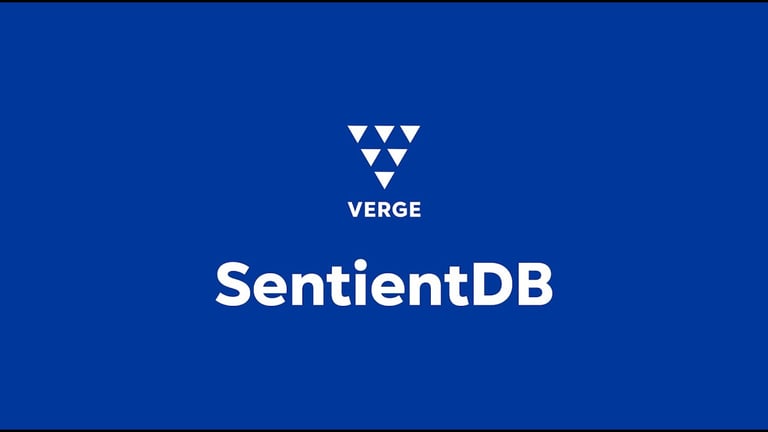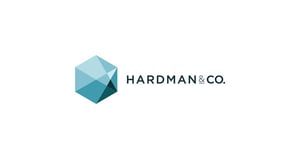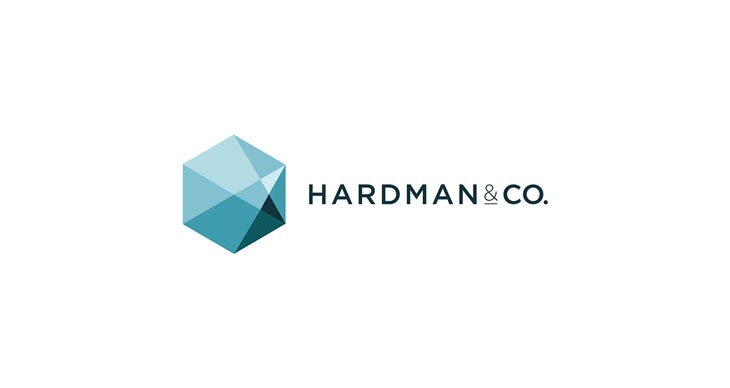Verge Technologies President and Chief Executive Officer Jimmy Jobe caught up with DirectorsTalk to discuss how the company is pioneering cloud convergence through its innovative platform, SentientDB.
Q1: Jimmy, you’ve coined the term ‘converged cloud’, why hasn’t this category existed before? What made Verge Technologies first to solve it?
A1: We saw about four or five years ago more and more companies that were trying to adopt what I’m going to call ‘public cloud providers’, the AWS’s, the Azure’s, the Google’s of the world.
As they migrated a lot of their infrastructure to cloud services, they found that a lot of things wouldn’t run in the cloud, legacy systems for example, they found security issues that they didn’t like. So, they created what I’m going to call a ‘hybrid cloud’ or a ‘multi-cloud environment’ where they had to keep some of their applications and their databases running in proprietary data centres while others were in the cloud. That created, if you would, multiple compute environments that needed to be managed but there were the only tools and platforms available that would be able to manage each one of those nodes. So, vertically you could manage within that data centre or vertically, the cloud providers would provide you a certain set of tools to help you manage within their cloud environment.
The result of that was that organisations had multiple cloud or compute environments and no way to really manage those across their enterprise. Each one of them had to be managed separately.
So, we created Verge Technologies and specifically SentientDB, which is a database platform as a service and our focus is on managing hybrid cloud and multi-cloud environments. In today’s enterprise world, Gartner says that the average enterprise has between four and seven different service providers to cover their distributed enterprise footprint. Some of those are nationally, some of those go globally.
So, being able to run a business process, your operations of your company, across seven different environments with seven different sets of tools with seven different service level agreements with seven different quality of service metrics, the complexity of that proves to be enormous.
So, we created SentientDB to be able to manage in a federated management model, so you have one view of all your database assets, no matter where they’re hosted, no matter who is managing those, whether they be in a proprietary data centre, whether they be in the AWS’s or the Azure’s or the Dell’s of the world. We manage them all in a unified management model that allows you to take one view and manage all of those as if they were in one virtual data centre.
So, that was the solution that we’re bringing to the market and we’re the first to bring an out-of-the-box solution for the marketplace today.
Q2: What are the core barriers that prevented cloud convergence, technically and economically, and how does SentientDB uniquely overcome those?
A2: Part of it is the fact that the business model that cloud service providers such as Azure’s and AWS’s and 500 others around the world, their business model is that if you’re not in their cloud, then they don’t make money. So, they want you to get in their cloud and they want to keep you in their cloud, and they make it very easy for you to come and very difficult for you to go.
The second part of that is that the cloud service providers, let’s take an example, let’s say AWS, AWS in no way is going to manage the enterprise database assets that happen to be in Azure and vice versa. They are not going to get out of their little silo so again, they make money if you’re in their cloud.
What Verge and SentientDB is bringing to the marketplace is what we call cloud convergence and that is managing many clouds as one cloud. That cloud convergence, no matter where a database happens to be hosted, allows you to manage, control, and optimise the performance of that database and make zero downtime possible.
Q3: Traditional cloud providers, like you said earlier, they manage vertically within their own environments. Why has nobody built a horizontal fabric until now, and how does Verge fill that gap?
A3: So, I think today, again, everyone is very focused on their business model. The cloud service providers are focused on their silo, their cloud, and keeping you in that cloud.
If you look at other aspects of the marketplace and you say, well, what about service companies? What about the Deloitte’s? What about the Accenture’s, the HP’s of the world, why don’t they put together a solution? Surely, they could do that. The answer is, yes, they could, and we believe they do, but they’re a service company. They get paid for putting in that 70% or 80% solution and customising it and locking you down for a 10-year contract to maintain it.
But to build an out-of-the-box product that would allow you to drop that in, install it in a couple of hours, being able to manage source and destination data centres or cloud providers within a matter of days, that doesn’t exist.
I think that if we look in the future, I believe in five years, every single IT environment is going to be managed with intelligent IT management using AI, as we do with Verge, in being able to basically hands-off with a self-managing, self-healing AI environment, be able to manage all of their IT. Whether it’s my company or somebody else’s company, I believe that is the future and I think that future is going to be coming very, very quickly.
Q4: What does managing many clouds as one actually look like in practice and what strategic capabilities does that unlock for global enterprises?
A4: For global enterprises and what it looks like today, when we pull in a database under our management platform, the first thing we look at is what is the service level of that database. In other words, how good does it have to be? Is it critical to the company’s organisation?
For example, the service level that that database needs to have is five minutes a year, then when we start managing that database, we would immediately go start replicating it to multiple different sites, bring up an active-active scenario where if one node goes down, the next transaction goes to the other node so that it couldn’t go down. On the flip side of that, if you had a database that you used every 90 days to run your quarterly results, then we’d just replicate that, and if the database ever went down, then you would just restore it. So, depending upon the database, we would put in the policies that would ensure that you could meet your service level agreement.
Secondly, we would be able to start monitoring all the critical data metrics around that database and around the environment, including the OS and the server resources. So, we knew at all times what that environment looks like, whether it was optimised, not optimised.
Thirdly, we would be able to take action to resolve, prevent or mitigate workload issues or performance issues before they happen.
So, all the metrics that I talked about, us collecting, trending, and predicting, we’re predicting issues out in the future before they happen, based upon what’s happening in real time as that database is processing. We know that if you don’t do something in the next 10 minutes, your CPU utilisation, for example, is going to top out over 100%, everything is going to start bogging down and things are going to fall over. By knowing that, and knowing that point in the future, then we can take that database and, for example, move it to a larger server, move it to a different site, and split the workload across multiple servers.
We do all of that in real time with zero downtime. The end users never lose access, the end users are always able to look at the data, the database itself never goes down, never bogs down, because we’re taking the action through our AI to prevent that workload issue from manifesting itself, from actually happening.
Q5: How does Verge’s AI-driven policy engine and real-time workload orchestration enable a level of automation that didn’t exist before?
A5: Our ability to scale, to basically provide an elastic performance bandwidth that allows you to scale infinitely out to meet performance, and then to scale back in, makes the ability to manage workloads, to control OpEx and CapEx, to save money on OpEx and CapEx.
So, for example, let’s just say, the way things normally run, if you had a retail organisation enterprise, and it was between Thanksgiving and Christmas. Typically, the way you would address that is you would go to your data centre, and you would over-provision, and you would try to guess how many servers you needed in order to handle that extra capacity. Whether you use those or not, you’re paying for them. You turned them up, you were using them, you over-provisioned, trying to guess what your workload is going to be across that period between Thanksgiving and Christmas.
In reality, what we do is we write a policy that governs the behaviour of that database instance and as demand and workload starts to increase, we start to do that elastic scaling. We can scale out and continue to scale out until you reach a point where everything is still operating at optimal performance.
You’ve only scaled out and used the amount of servers on demand that you need to in order to ensure that the workload continues to process. As that workload starts to diminish, then we start scaling that back to that one instance or multiple instances, if there’s five or six database instances always running, and so by doing that elastic bandwidth, we can help organisations that never had that capability before.
Today, if you need extra capacity in your data centre, I hope you’ve got the servers to do it. If you need extra capacity within AWS, AWS can probably help you provision servers and get that capacity. But if you want to look across your enterprise and how your business processes are running, and being able to immediately, in real time, at runtime, address workload issues, then that’s what Verge can help you with. That capability does not exist today.
For example, if you’ve got a data centre and you need additional resources to run workloads that are varying workloads, we can provision out, we can scale out from your data centre to AWS, put up multiple instances of that database, and run them as one cluster. So, your on-demand resource is now AWS, if you don’t need that resource, then we scale back to your own proprietary data centre.
So, we can run workloads within a compute or cloud environment, or we can run them across different cloud environments. That doesn’t really exist today either.
Q6: Why are both public cloud vendors and large integrators structurally incapable of delivering cloud convergence? How does Verge sidestep those incentives?
A6: In today’s world, it has to do with the business and the focus, and I don’t want to say poor enterprise, and no one is looking out for the enterprise, but poor enterprise, no one’s looking out for the enterprise. Today’s world, the cloud service providers, the Azure’s and Google’s and Dell’s and AWS’s of the world, operate in silos, and again, they don’t make money unless you’re in that silo. So, they don’t have any desire to go solve this problem for the enterprise, it’s not in their business model, it’s not in their best interest to go solve this problem. Solving this problem for the enterprise can only make it easier for the enterprise to move assets out of their silo.
Service providers make their business models based on providing services and locking down long-term service contracts. Can a Deloitte or an Accenture go build you a bridge in between AWS and Azure? Of course they can, and they do. They can build you that custom bridge to allow data to go back and forth between the two, they can build you that technology stack, they can lock you into a long-term contract to maintain that stack and make sure that stack never goes down. That’s what they do. They’re a service company; they’re after the service and they’re after selling people and bodies and partial solutions that they can customise so that it just fits you.
But no one is building a product that you can drop in and drop in within days and be able to solve the same problem.
So, the service companies have no desire to go sell products, they want to sell services. The cloud service providers have no desire to go build something that would address hybrid cloud/multi-cloud environments because they don’t make money if they do that.
That opens the door to be able for a company like Verge Technologies and a product like SentientDB to be able to drop into the enterprise and manage all of the enterprise database assets. So, that’s where our unique offering, out-of-the-box product, can cut cycle time, can cut years off of development with service companies, can actually solve problems that cloud service providers have no desire to go solve today.
Q7: If the next five years of IT belong to companies that can abstract away from cloud complexity, how does the group’s position acquirers or partners to leapfrog the competition?
A7: So, today we are first. Today, I think that Verge is the multi-cloud hybrid-cloud environment, today, how people are managing that is that they’re managing that vertically.
If a company says, I do multi-cloud management today, and there’s a lot of vendors out there that say, yes, I do multi-cloud, I do hybrid cloud. What they really mean by that is that they can install within the AWS cloud and they can install within an Azure cloud, and they can manage your assets vertically. They can’t do all the things we can do, but they can do some things, and they can manage that vertically within that compute environment and within that stack. They say, because I can do that here and I can do that here and I can do that here, I’m really doing hybrid cloud, multi-cloud management.
I’m going to say, no, you’re not.
You’re managing within a particular stack with a particular set of tool sets that happens to work with that vendor. You’re not abstracting that so that you can manage both vertically and horizontally, present one view of that asset to the enterprise, so the enterprise can manage, control, and optimise performance of that and ensure that it never goes down.
You’re not doing that. That’s something that Verge does and can do today.












































